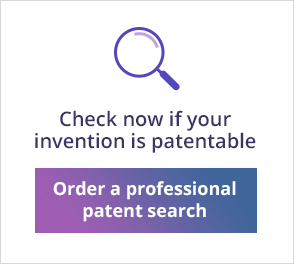If you have come up with a unique idea, you might want to protect it. So how do you patent an invention? In this article I will explain that, step by step. But first I will have to explain some fundamentals.

What is a patent right and what is its legal scope?
A patent is a legal right by which a country’s government (via a patent office, authority etc.) gives a patent owner the exclusive right to deny others from using, manufacturing, selling and importing the invention. A patent is enforced only in the territory by the government (there is no such thing as an “international patent”), for a limited period of time (usually 20 years).
A patent is considered to be the best and most comprehensive type of Intellectual property protection, however in order to patent an idea it must fulfill strict legal requirements. Furthermore, because of that and because you have to file a patent application in each and every relevant country (each with its own laws), patenting an invention is a very long, complicated & resource (time & money) consuming procedure.
What makes an invention patentable – basic legal requirements
Patents laws differ from country to country however, most patent laws have several conditions an invention has to meet in order to be patentable:
- Absolute novelty – i.e. the idea behind the patent must be new. This condition is total and universal – in order to be new there can´t be any type of previous publication (detailed description of the invention in scientifical, technological or journalistic articles, product catalogs, books, films, blog posts, lectures etc.) anywhere in the world.
- Inventive step (also known as “Non obviousness”) – The patent laws change slightly from country to country but generally speaking the invention must defer from prior art (existing technologies items and products) in a non obvious way to a person skilled in the trade .
- Technological applicability and utility – The invention must describe some kind of technological tangibility (in most countries an idea describing methods for doing business can’t be patented on its own without some sort of accompanying technology)
So how do you patent an invention? A step-by-step guide
Now that we understand what a patent is and what makes an invention patentable we can focus on the main question concerning this article: how do you patent an invention?
1. Self research and Search:
As mentioned above, in order to patent an idea, it must be totally new and differ from existing products. That is why the first step should be conducting a self search, using one of the countless free and open search tools (Google – for existing products, google scholar – for scientific articles. Espacenet, PATENTSCOPE and Google patents, for patents and patent application etc.)
2. Ordering a patentability Search from a patent search company
There is no short answer to the question “how do you patent an invention?”, and this stage is where it is getting more complex.
If you’re not a trained professional in patent searches, it’s advisable (as recommended by the USPTO and EPO) to retain the services of a patent search company.
Such companies conduct patent search using trained professionals with extensive legal and technical knowledge. Moreover they have access to special paid search tools and databases (such as Orbit questel, PatBase, STN etc.) these databases contain data that can’t be accessed through the free databases and much stronger search capabilities than any open database.
A patentability search report will provide you with a clear picture regarding prior art that might prevent the invention from becoming a patent.
3. Analyze the findings
Although not obligatory it is recommended to go to a patent attorney, agent or IP consultant to analyze the patentability search report and decide whether to proceed or first amend the idea and conduct a second search. If you have come to the conclusion that the idea is patentable you can proceed.
4. Select a filing Path
Now you should decide in which countries to file the patent application, and according to that choose, the most appropriate strategy (a provisional to the USPTO to “buy” more time, file an EP or a national application or an application via the PCT)
5. Draft and submit a patent Application
You (or your patent attorney/ agent) must draft a full patent application according to the laws and regulations of each regional patent office that you chose.

A typical application document will include a title, abstract, prior art/ background, full description, drawings and the most important part – patent claims, a description of the invention’s essence which defines the exact legal boundaries of the protection seeked.
Now you (or as recommended, your patent attorney/ agent) file the application to the selected patent authorities, pay filing fees, according to the filing procedure of each relevant country’s or regional patent office and filing mechanism.
6. Patent application examination, rejection and answering office actions.
After filing, the application is examined by a patent examiner. If you have ever Googled “how do you patent an invention”, you probably are aware that Many patent applications are not approved after one examination process (in the US for example, around 50% of all applications are granted and become approved patents).
At this stage you could either drop the application or answer the office action (by yourself or as strongly recommended via your patent attorney/ agent) thus starting a process of “negotiation” with the patent examiner. It is possible that during this process you will be required to change the claims and might need more search and research to find relevant prior art supporting your case. The whole process can take anywhere between a few month to several years (in which you must continue to pay fees)
7. Patent Granted!
Once the patent examiner approves the application you are required to pay more fees and then the granted patent is published. Note that you must continue to pay annuity fees in each country your patent was granted during the patent life (20 years), in order to keep the patent valid.
As mentioned there is no short answer to the question “how do you patent an invention”. But hopefully this article contributed to you with a deeper level of understanding for the process. If you want to learn more about patents, feel free to read another one of our articles, or contact us if you have any further questions.

